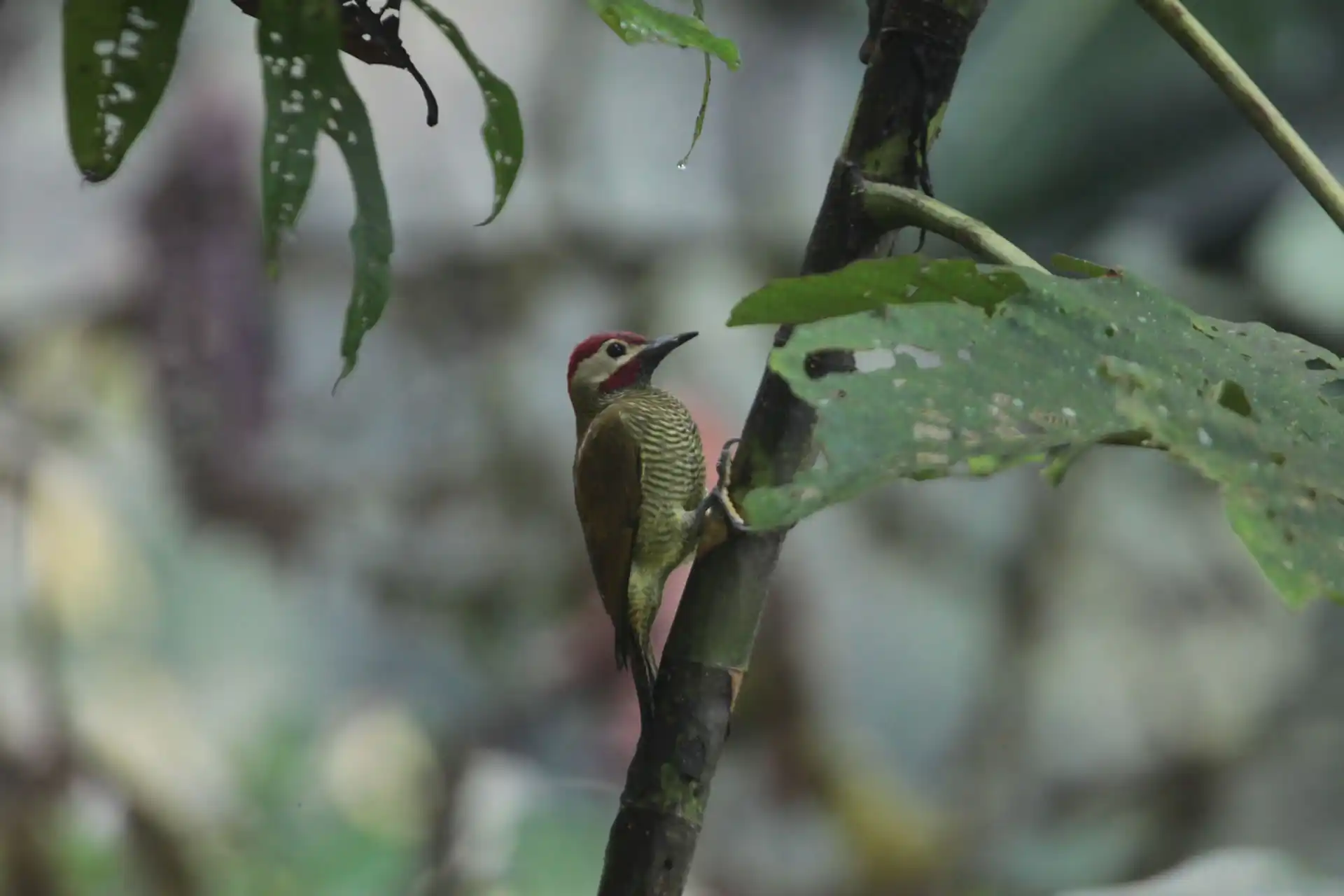Woodpeckers are found almost everywhere around the world. Known in Spanish as carpinteros, or carpenters, these birds tirelessly drill into trunks and branches of every kind of wood. Woodpeckers are specialists in making holes in even the hardest wood with their strong beaks, their principal workman’s tool.
The Ingenious Adaptations of Woodpeckers
But they’re also gifted with other important tools for their carpentry work. They have a mechanism made up of muscles and tendons behind their jaws that absorb the shock – all the energy of the incessant tapping – avoiding damage to their jaw and brain.
Their workbenches are almost always vertical and at a great height; instead of a security harness, their talons are adapted: two at the front and two behind, allowing them extra grip (normally birds have three front and one back talon, allowing them to perch on branches and not on vertical surfaces). Finally, the large species have rigid and elongated tails that provide them with excellent balance while they make holes in the wood with great force and speed.
The objective of all this work varies. Usually they are looking for food: insects that might be inside the rotten wood of a dead trunk, or insects that might be attracted to the same holes in a live, healthy tree. What’s more, the strong tapping echoes around the forest attracting their partners, as if the trees were great big drums with which they could hypnotise their mates and establish their territory. Finally, with this great skill, they construct their homes: holes in the soft trunks that, once discarded by the woodpecker family, also serve as homes for many other bird species that could never execute these brilliant feats of carpentry for themselves.
In this way the woodpeckers fill a vacancy in the forest, not only are they the artists behind incessant drum sessions, but they also act as predators of insects and conduct termite control. They have a long tongue that, after perforating the holes, is able to enter deep into the trunks, licking out the greatest amount of insects possible. They can also feed on the eggs of other birds, fruit, and tree sap. But for the most part, they are the masters of building the homes of other species like owls, wrens, swallows and flycatchers, among other opportunists of the work of others.
In Ecuador, 35 species of woodpeckers have been identified, within many groups and families. Of all of these, 14 are found in north-east Ecuador, within seven families. Although they usually live in communes and are easy to find due to their constant tapping, it is always exciting to see them, banging and banging the hammer, with their eye-catching colours and crests.
A woodpecker that easily can be spotted in Mashpi is the golden-olive (Piculus rubiginosus); a woodpecker of medium size with fancy colours, brilliant gold, that reflects the sun between the branches of the canopy and the tree trunks.
The golden-olive woodpecker showing its decorated golden plumage.
Another incredibly eye-catching and attractive species that is found in Mashpi is the black-faced woodpecker (Melanerpes pucherani). This woodpecker is adorned with colours that contrast with the wide black line on its face and eyes, and the black of its back and wings. Like the other species in its Melanerpes family, it is noisy and therefore very easy to find among the trees.





